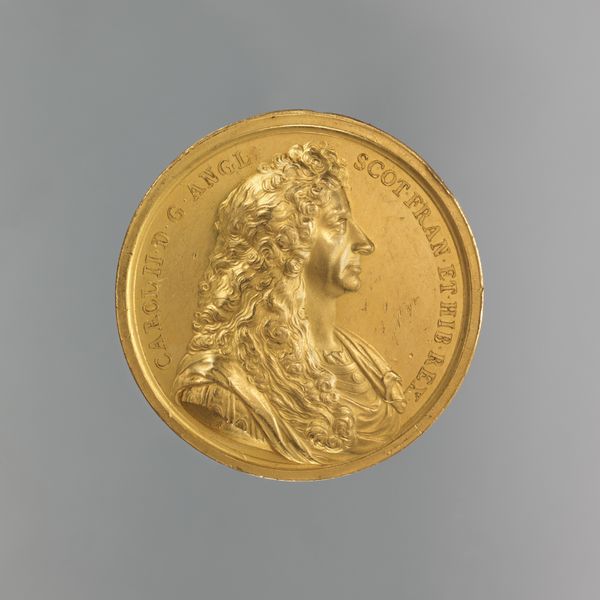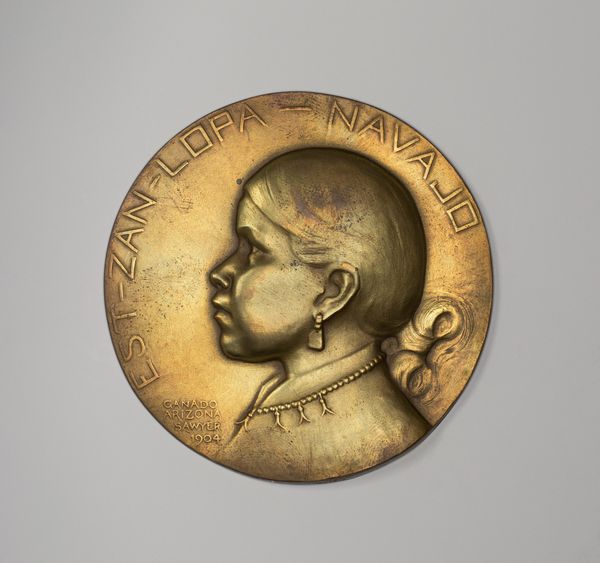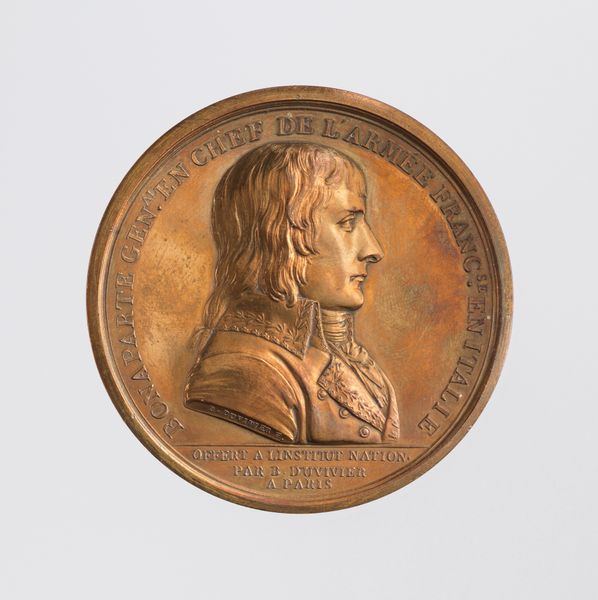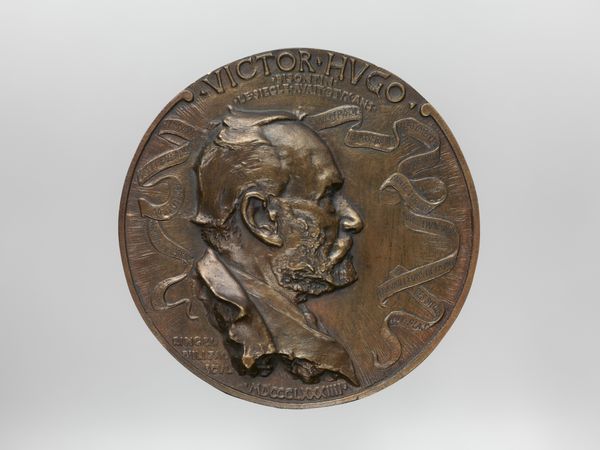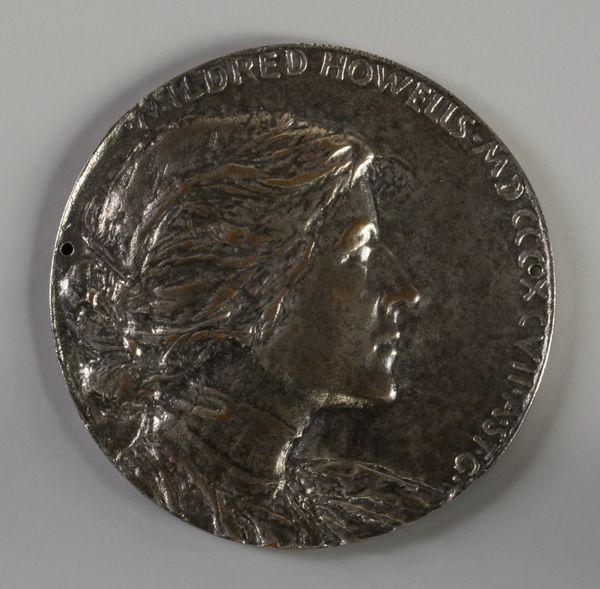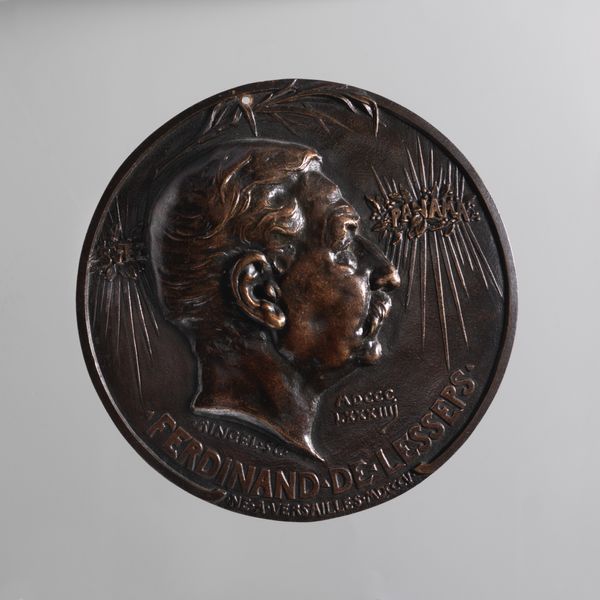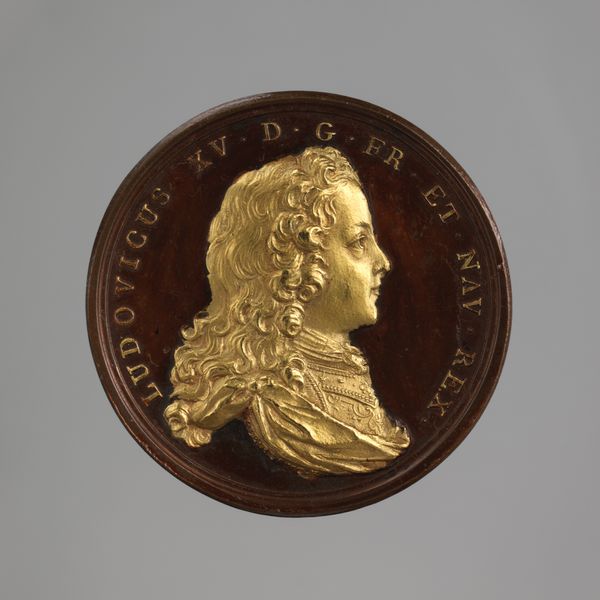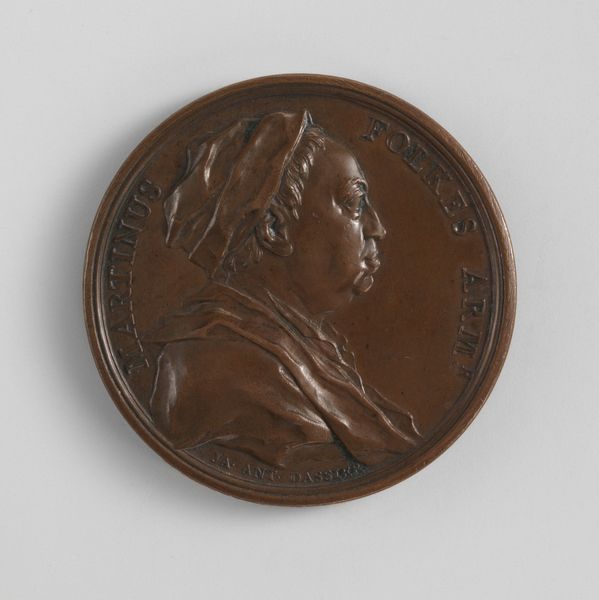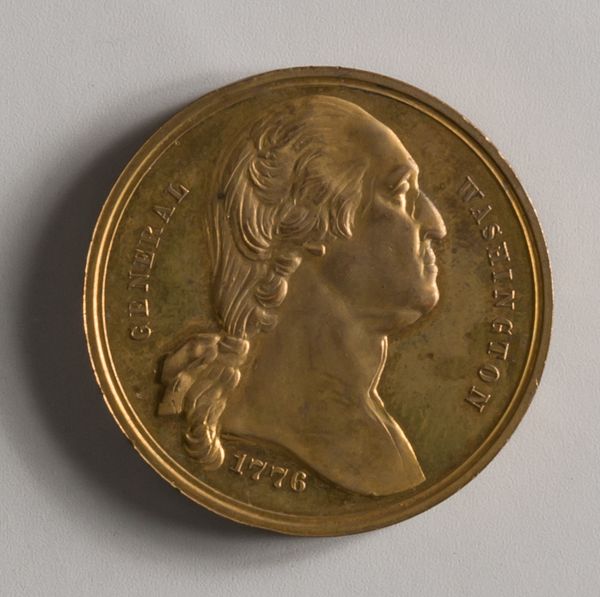
bronze
#
medal
#
3d sculpting
#
egg art
#
sculpture
#
bronze
#
sculptural image
#
unrealistic statue
#
portrait head and shoulder
#
framed image
#
vessel shaped image
#
united-states
#
watercolour illustration
#
decorative-art
#
statue
Dimensions: Diam. 7 cm (2 3/4 in.)
Copyright: Public Domain
Editor: Here we have "Ne-I-So-Meh—Yuma Yuma," a bronze sculpture created in 1904 by Edward Warren Sawyer. The profile portrait on this medal appears dignified, but there's also something melancholic in its expression. How do you read this piece? Curator: That melancholy is precisely what strikes me. Sawyer's medal isn't just a portrait; it's a product of its time, deeply embedded in the social and political climate surrounding Native American representation. Do you notice how the title emphasizes both an anglicized name and the Yuma tribal affiliation? Editor: I see it now, the dual naming seems important. It almost feels like an assertion of identity, maybe even a reclaiming of it. Curator: Precisely! Consider the period: early 20th century, marked by policies aimed at assimilation and the suppression of indigenous cultures. Medals like these, often commissioned for ethnographic documentation, could simultaneously attempt to memorialize and essentialize a culture deemed to be vanishing. How do you think the setting where such medal was displayed affected the viewers’ perception? Editor: Good question! Museums during that time weren't always neutral spaces. Placing this medal in a natural history museum, for example, would reinforce this idea of a "vanishing race", right? Curator: Exactly. Its meaning shifts depending on whether it is presented as an artistic achievement or as an anthropological specimen. Editor: I never thought of it that way. It really makes me question how institutions shape our understanding and perception of art. Curator: Indeed. Sawyer's work becomes a lens through which we can examine the complex relationship between art, power, and cultural memory. Understanding the context is critical to recognizing that even portrait medals were subject to political uses. Editor: This makes the artwork even more intriguing and a little disturbing too. Thanks, this discussion gave me so much more to think about.
Comments
No comments
Be the first to comment and join the conversation on the ultimate creative platform.


